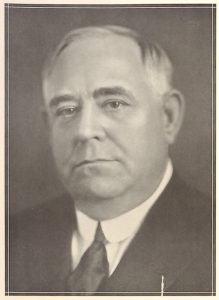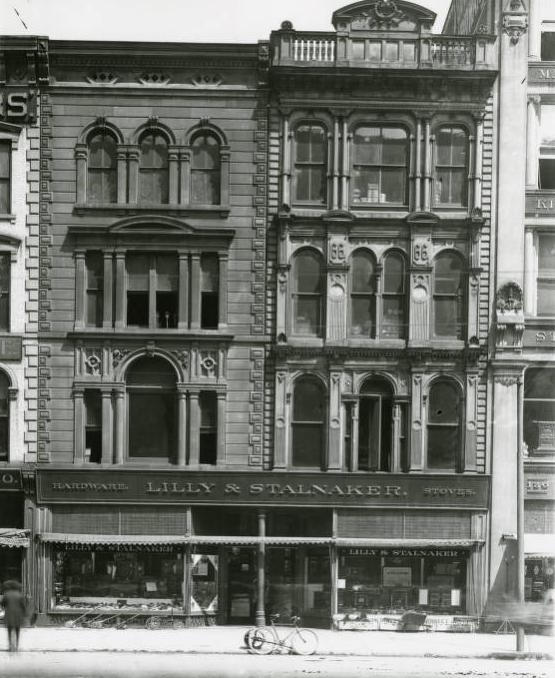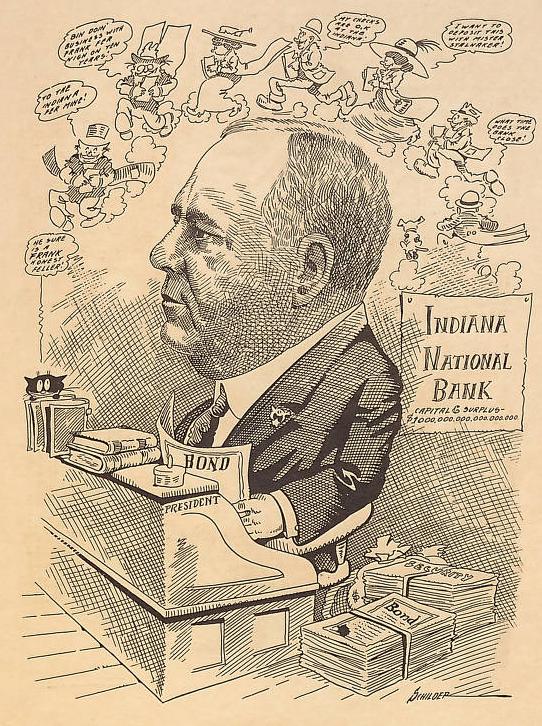
Photo info ...
Credit: Indiana University IndianapolisView Source
(Dec. 31, 1859-Aug. 9, 1932). A nationally known banker and financier, Frank Douglas Stalnaker was born in Bloomfield, Iowa, the son of Lemuel E. Stalnaker and Martha Jamieson Stalnaker. The family moved to Cambridge City, Indiana, where Stalnaker spent his grade school years, before permanently settling in Indianapolis. Immediately after completing courses at the Indianapolis Business College in 1883, he began work as a bank clerk, and thus began his steady rise in the financial world. On October 8, 1890, Stalnaker married Maude Grant Hill, the daughter of James Boone Hill and Lorinda Ellen Small. The couple had one daughter.

Stalnaker was appointed receiver of the Fletcher and Sharpe Bank in 1893 at the age of 34. That same year he joined James W. Lilly in founding the hardware firm of Lilly and Stalnaker, which operated successfully until it was sold to the in 1925. A Republican, Stalnaker launched an unsuccessful mayoral campaign in 1905. He became president of the Capital National Bank in 1906 and assumed the presidency of the when the two banks merged in 1911.
Following the death of his first wife in 1910, Stalnaker married Cecilia Mansur Wulsin in 1914. The Stalnakers purchased Albert Lieber’s farm “Vellamada” in 1920, renamed it “Questover,” and engaged landscape architect to redesign the property. As a neighborhood resident, Stalnaker became the leading advocate for its incorporation as a town to prevent it from annexation as part of Indianapolis.

In addition to his professional career, Stalnaker was president of the Indianapolis Clearing House, the Merchants’ Association, and the . He held directorships of the Union Trust Company, the State Life Insurance Company, the , the Telephone Company and the Commercial Club (which later became the ). He also was one of three founders of the .
He was active in the and played a key role in development of the Indianapolis chapter of the Red Cross, serving as an executive committee member beginning in May 1917 soon after it was organized and then as treasurer for more than a decade. He also enjoyed memberships in the University, Contemporary, Columbia, Indianapolis Athletic, Indianapolis Country, Meridian Hills, Woodstock and Highland clubs.
Stalnaker remained as president of Indiana National Bank until his death. Under his conservative management, it was known nationally as one of the strongest banks in the country. In 1933, at the height of the Great Depression, shortly after Stalnaker’s death, the bank not only survived but grew, taking over Continental National Bank.
An active Mason, Stalnaker’s funeral was held at the new , where he had acted as chairman of the building committee. He devoted much time in the last 10 years of his life to building the largest Scottish Rite cathedral in the world.

Help improve this entry
Contribute information, offer corrections, suggest images.
You can also recommend new entries related to this topic.